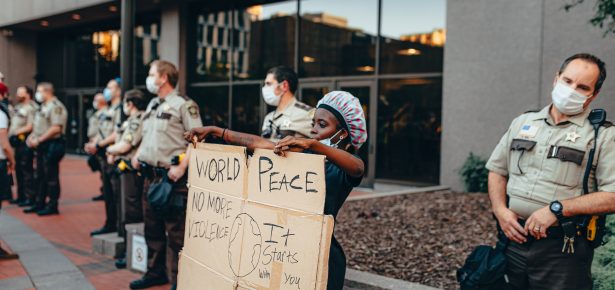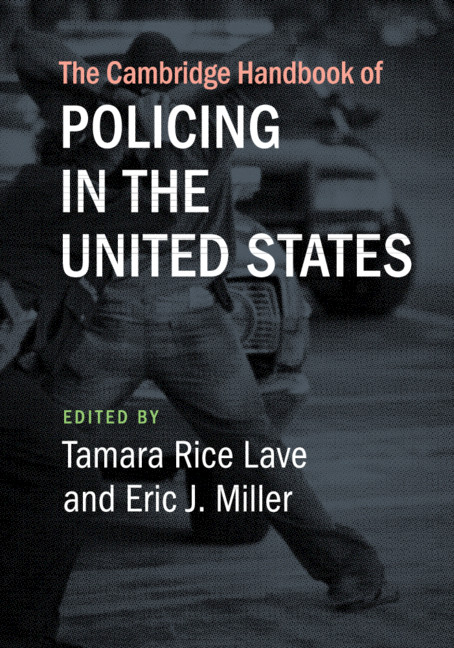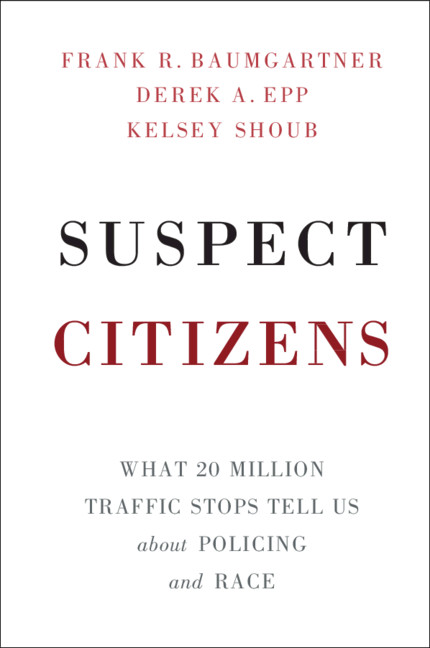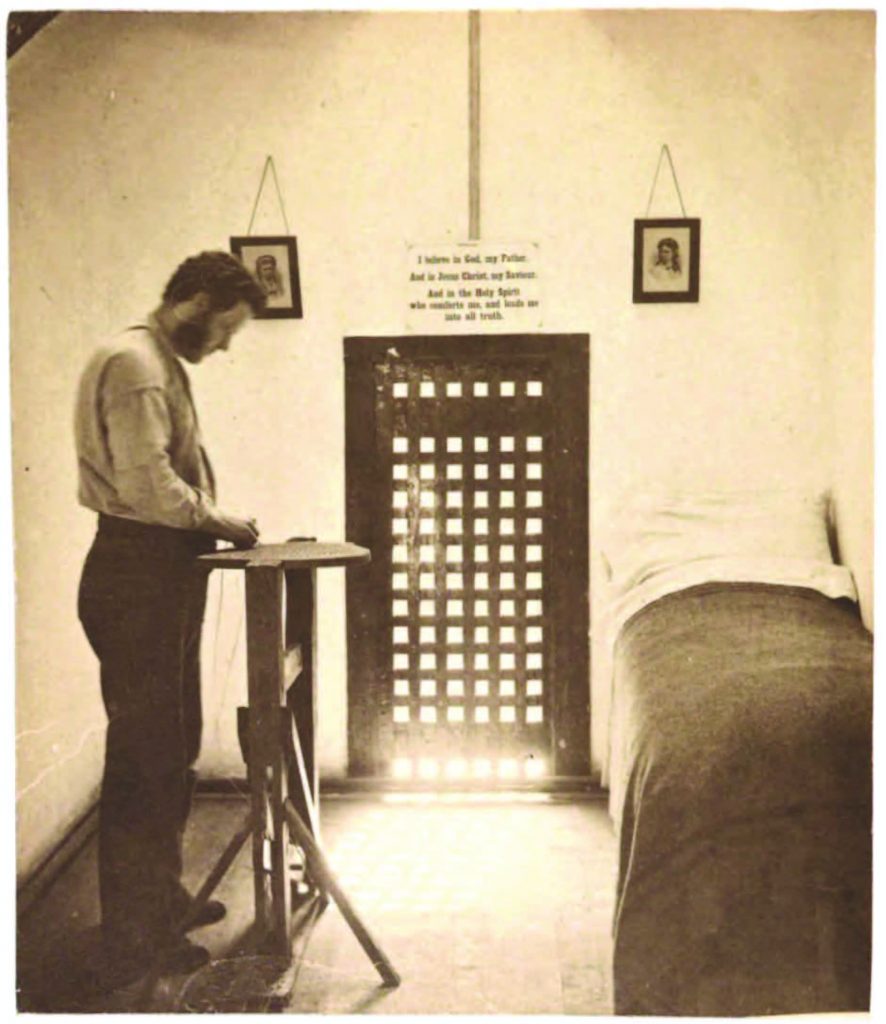
As Black Lives Matter brings millions together in the mission to end state-sanctioned violence and anti-Black racism, we want to highlight some of the work we’ve published – or will publish – that supports this movement. This piece is the first in what will be an ongoing series, each one dedicated to a separate issue (or issues) – including elections, health care, labor rights, structural inequality, and more – designed to cut across the traditional academic disciplines and contribute to these important conversations. In this post, three of our social science editors discuss books they’ve commissioned that deal with policing and jails, along with other relevant work.
Matt Gallaway (MG): I spoke to Tamara Lave (@tamaralave) and Eric Miller (@millerej_11), co-editors of The Cambridge Handbook of Policing in the United States, and asked each of them how they see their work – and that of the contributing authors – shaping or reflecting the discourse around policing and Black Lives Matter.

Tamara Lave and Eric Miller (“Too Many Police, Too Much Force”): The mass protests against policing in the United States question what the police do, and whether we need the police at all. In Race, Pedestrian Checks, and the Fourth Amendment — one in a section of chapters devoted to racially motivated policing — Devon W. Carbado discusses the ways in which the Fourth Amendment permits the police to target Black people for street harassment. In Policing in St. Louis: “I Feel Like a Runaway Slave Sometimes,” Thomas B. Harvey and Janae Staicer (@janaestaicer) document the effect of aggressive and community-targeted policing practices on five Black women to make the case for abolishing the police. Both Eric J. Miller — in The Police as Civic Neighbors— and I. Bennett Capers (@BennettCapers) — in Citizenship Talk — ask what it would take for the police to treat Black people as equals citizens in the United States. Miller tries to imagine what policing would look like if it truly engaged with the people of color who bear the brunt of police attention. Capers, in the spirit of high-tech policing, proposes a series of interventions designed to reduce police encounters with Black people so as to reduce their opportunities to brutalize the individuals they encounter on the street. Finally, in The Futile Fourth Amendment, Osagie Obasagie and Zachary Newman examine why the police keep killing Black and Brown people, concluding that the blame lies in part with the courts for deferring to police determinations of what counts as reasonable use of force.
Sara Doskow (SD): In Suspect Citizens, Frank R. Baumgartner, Derek A. Epp, and Kelsey Shoub (@k_shoub) examine the extent and shape of racial disparities in citizen-police interactions by drawing on an extraordinary database of 20 million traffic stops that allows them to track police practices—both in aggregate and down to the level of individual officers and agencies. Traffic stops are one of the most routine forms of citizen-police interaction, and—as a result of the “war on drugs” and two controversial Supreme Court rulings—for decades, police officers have had broad discretion to use traffic stops to search drivers for contraband.

Say the authors: “Our studies have consistently corroborated what activists charge. Black and Latino men are targeted for searches at two or three times the rate of similarly situated white men. These disparities are not constrained to any geographic region, but are ubiquitous across the country. Some places have it worse: for example municipalities that rely on fines, fees, and forfeitures to fund their government.” Black and Latino drivers who are searched are less likely than their searched white counterparts to actually be found with contraband.
The authors argue that, while very few Black Americans have escaped the knowledge that they could be pulled over for a pretext, searched, and possibly arrested, it is precisely the racially targeted nature of these searches that has kept them outside the gaze of most middle class white Americans.
Is it a problem of “bad apple” officers? Here the authors find a great deal of variation in the practices of individual officers and agencies, but this itself is noteworthy: “It is hard to call one-third of the total a set of ‘bad apples.’ Rather, these are officers who fall not very far from the norms which are enforced and encouraged throughout their agencies. Of course, very few norms seem to be enforced very closely.”
Suspect Citizens quantifies in stark terms the racial disparities that those in highly policed communities have known for a long time.
I would also encourage you to explore the Portals Policing Project led by Vesla Weaver (@VeslaWeaver), Tracey Meares (@mearest), and Gwen Prowse (@MsProwse), which builds from the political knowledge and first-hand accounts of people in highly policed, race-class subjugated communities. See also this related Monkey Cage article: https://www.washingtonpost.com/politics/2020/06/17/we-listened-people-highly-policed-us-communities/
As the BLM movement grows in people and resources, and new windows for change open with accompanying debates about what that change should be, it’s essential to listen first and foremost to activists and stakeholders deeply embedded in these communities. See important related work from Cambridge author and series editor Megan Ming Francis (@meganfrancis) on Black social movements, funding, and mission creep here and here. Ming Francis has also curated a list of readings and podcasts on abolition here, and you can read her book on the NAACP’s battle to protect black lives from lynching and mob violence in the early 20th century here.
Cecelia Cancellaro (CC): Ashley Rubin (@ashleytrubin), author of the forthcoming The Deviant Prison: Philadelphia’s Eastern State Penitentiary and the Origins of America’s Modern Penal System, 1829-1913, is interested in why societies punish in the ways that they do in different times and places in history, and particularly how penal change is possible. Rubin’s historical perspective is an important one to consider.

According to Rubin, “One of the things people today don’t talk about enough is that our current penal system is new. We haven’t always done things this way. We haven’t always incarcerated people at this rate, in the types of prisons we use today, or even as punishment for crime. Incarceration intended as punishment is surprisingly new in human history.”
When talking about reform or abolition, going back to the beginning can be useful to be reminded that whatever it is we are trying to reform or abolish wasn’t always there. “If we can understand its beginning, maybe we can understand what happened later, and what’s happening now. For me, though, one of the most relevant things has been the level of anxiety both ordinary people and lawmakers had about the early prisons. The idea of incarcerating someone for a long period of time—as punishment and not just a short-term situation while they awaited their trial—seemed barbaric.”
Rubin expands on these views in both a TEDx talk and an April 2020 interview with Brooke Gladstone on NPR’s On the Media, and her forthcoming book tells us a great deal about penal reform in an era when prisons were still new and carefully scrutinized.
–by CC SD MG and Senior Marketing Executive Paris West
See here for free access to a collection of Cambridge articles on protest, policing, and race and must-read eBooks on racial inequality and racial justice.
Ending Overcriminalization and Mass Incarceration by Anthony B. Bradley (@drantbradley) Chapter 5 ‘Ending the School-to-Prison Pipeline’ is free to view.
Red Zones by Marie-Eve Sylvestre (@MEveSylvestre), Nicholas Blomley (@NBlomley), and Céline Bellot (@celinebellot)
The Modern Prison Paradox by Amy E. Lerman (@AELerman)
Incarceration Nation by Peter K. Enns (@pete_enns)
Chapter 6 of Suspect Citizens (Search and Arrest Patterns by Officer and Handbook chapters mentioned in this piece are free to view until July 27, 2020.
Cambridge Now is a series of blog posts exploring connections between scholarly research and ongoing calls for social justice. If you’ve enjoyed this post, please consider forwarding it to a friend or colleague.
Latest Comments
Have your say!